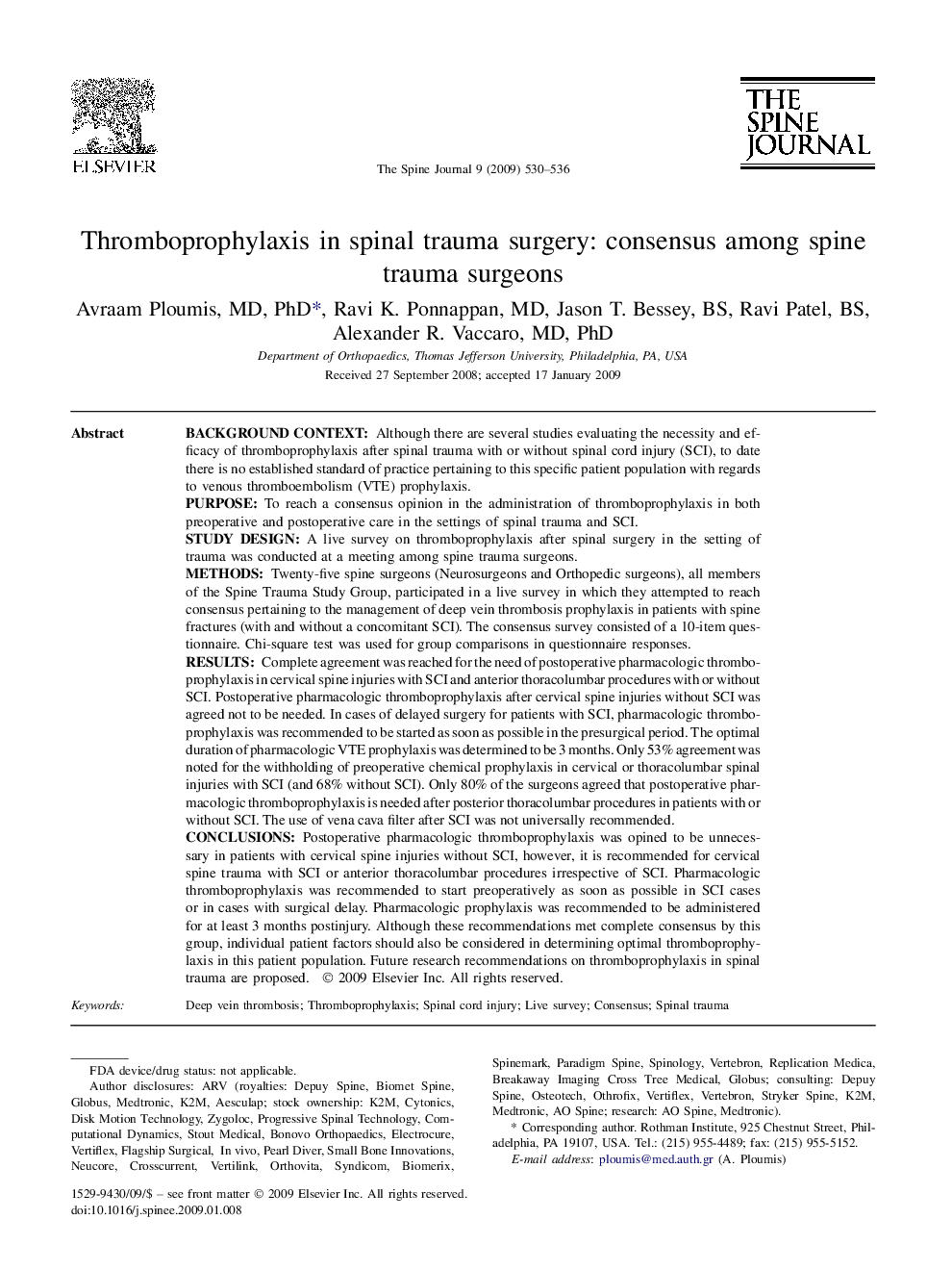| Article ID | Journal | Published Year | Pages | File Type |
|---|---|---|---|---|
| 4099587 | The Spine Journal | 2009 | 7 Pages |
Background contextAlthough there are several studies evaluating the necessity and efficacy of thromboprophylaxis after spinal trauma with or without spinal cord injury (SCI), to date there is no established standard of practice pertaining to this specific patient population with regards to venous thromboembolism (VTE) prophylaxis.PurposeTo reach a consensus opinion in the administration of thromboprophylaxis in both preoperative and postoperative care in the settings of spinal trauma and SCI.Study designA live survey on thromboprophylaxis after spinal surgery in the setting of trauma was conducted at a meeting among spine trauma surgeons.MethodsTwenty-five spine surgeons (Neurosurgeons and Orthopedic surgeons), all members of the Spine Trauma Study Group, participated in a live survey in which they attempted to reach consensus pertaining to the management of deep vein thrombosis prophylaxis in patients with spine fractures (with and without a concomitant SCI). The consensus survey consisted of a 10-item questionnaire. Chi-square test was used for group comparisons in questionnaire responses.ResultsComplete agreement was reached for the need of postoperative pharmacologic thromboprophylaxis in cervical spine injuries with SCI and anterior thoracolumbar procedures with or without SCI. Postoperative pharmacologic thromboprophylaxis after cervical spine injuries without SCI was agreed not to be needed. In cases of delayed surgery for patients with SCI, pharmacologic thromboprophylaxis was recommended to be started as soon as possible in the presurgical period. The optimal duration of pharmacologic VTE prophylaxis was determined to be 3 months. Only 53% agreement was noted for the withholding of preoperative chemical prophylaxis in cervical or thoracolumbar spinal injuries with SCI (and 68% without SCI). Only 80% of the surgeons agreed that postoperative pharmacologic thromboprophylaxis is needed after posterior thoracolumbar procedures in patients with or without SCI. The use of vena cava filter after SCI was not universally recommended.ConclusionsPostoperative pharmacologic thromboprophylaxis was opined to be unnecessary in patients with cervical spine injuries without SCI, however, it is recommended for cervical spine trauma with SCI or anterior thoracolumbar procedures irrespective of SCI. Pharmacologic thromboprophylaxis was recommended to start preoperatively as soon as possible in SCI cases or in cases with surgical delay. Pharmacologic prophylaxis was recommended to be administered for at least 3 months postinjury. Although these recommendations met complete consensus by this group, individual patient factors should also be considered in determining optimal thromboprophylaxis in this patient population. Future research recommendations on thromboprophylaxis in spinal trauma are proposed.
